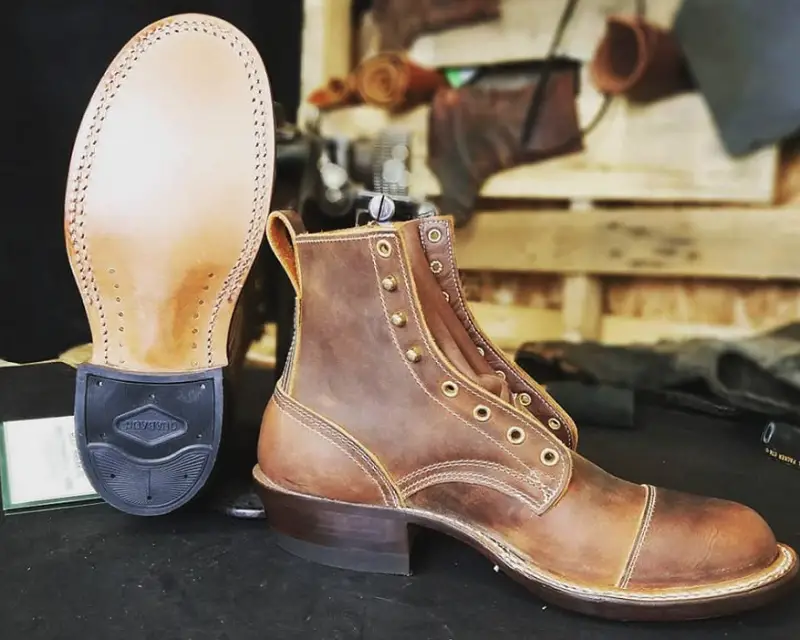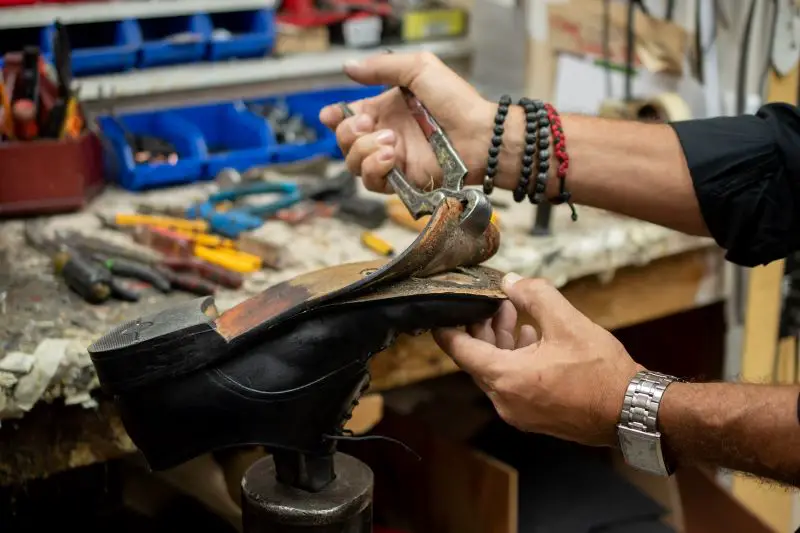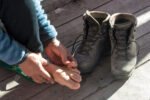As a wearer of boots, one knows that nothing lasts forever. Eventually, the soles of the boots wear out and need to be replaced. It is a common practice to re-sole a pair of boots, especially if the upper leather is still in good condition.
Resoling is a cost-effective method to keep a pair of boots functional for a longer time. However, the question arises whether a partial welt sole boot can be re-soled or not. This essay will discuss the concept of welt soles and whether partial welt sole boots can be re-soled.
The answer to this question is yes, a partial welt sole boot can be re-soled. However, the process of re-soling a partial welt sole boot is more complex than that of a full welt sole boot.
The lack of a welt on the sides of the sole makes it more difficult to attach a new sole, and therefore requires a different approach.
This article will cover everything you need to know about re-soling a partial welt sole boot.

What is a partial welt sole boot?
A partial welt sole boot is a type of boot construction in which the welt does not extend around the perimeter of the sole. Instead, the welt is only present at the front and back of the boot, leaving the sides of the sole exposed.
This construction style is commonly found in dress shoes and boots, as it provides a sleeker look and allows for more flexibility in the sole.
A partial welt sole boot, also known as a half-welt boot, is a type of footwear that has a partial or half welt that runs along the outer edge of the sole, rather than the entire circumference of the shoe.
A welt is a strip of leather or synthetic material that is stitched between the upper and the sole of the shoe, providing strength and durability to the construction of the footwear.
Partial welt sole boots are a popular choice for those who desire sturdy and reliable boot that is suitable for both work and casual occasions.
The partial welt construction provides the necessary strength and durability, without adding unnecessary weight and bulk to the shoe.
This makes it a practical and comfortable option for those who require a work boot that is lightweight and flexible but still offers the protection and support needed for the job.
One of the key advantages of a partial welt sole boot is that it is easier and more cost-effective to repair than a full welt boot.
If the sole of the shoe becomes damaged or worn, only the partial welt and sole need to be replaced, rather than the entire shoe. This makes partial welt sole boots a more sustainable and environmentally-friendly option, as they can be repaired and reused for many years.
Partial welt sole boots are available in a variety of styles, including lace-up boots, Chelsea boots, and chukka boots.
They are also available in a range of materials, including leather, suede, and synthetic materials. The choice of material will depend on the desired level of durability, flexibility, and style.
When selecting a partial welt sole boot, it is important to consider the intended use of the shoe, as well as the quality of the construction and materials.
Look for boots that have a sturdy sole, good traction, and a comfortable insole. It is also important to consider the fit of the boot, as a well-fitting shoe will provide the necessary support and comfort for long hours of wear.
Partial welt sole boots are a reliable and practical option for those in need of durable and comfortable work or casual boots. With their partial welt construction, they offer the necessary strength and durability, while remaining lightweight and flexible.
Their sustainability and ease of repair make them a smart choice for those seeking a long-lasting and environmentally-friendly footwear option.
How do you re-sole a partial welt sole boot?
To re-sole a partial welt sole boot, the old sole must first be removed. This process involves cutting away the old sole and any adhesive or stitching holding it in place. The upper leather and remaining welt are then cleaned and prepped for the new sole.
Next, a new sole is selected, and it must be cut to fit the shape of the old sole. Once the new sole is cut, it is then attached to the upper leather and remaining welt with adhesive or stitching.
The process of re-soling a partial welt sole boot is more complicated than that of a full welt sole boot. The lack of a welt on the sides of the sole requires a more delicate approach, and the process of attaching the new sole requires more attention to detail.
However, with the right tools and expertise, it is possible to re-sole a partial welt sole boot and extend its lifespan.
Re-soling a partial welt sole boot is not as difficult as it may seem. With some basic tools and materials, you can restore your favorite boots to their former glory. Follow these steps to re-sole a partial welt sole boot:
Step 1: Gather Materials
There are a few materials that you will need in order to get started with the re-soling. These include:
A new sole: Choose a sole that is the same thickness as your current sole to ensure a good fit. You can find replacement soles at a shoe repair shop or online.
A boot knife or sharp scissors: You will need to cut away the old sole to make way for the new one.
Rubber cement: This will be used to attach the new sole to the boot.
Sandpaper: Use sandpaper to rough up the surface of the old sole to help the new sole adhere better.
Hammer: You will need to hammer the new sole onto the boot to ensure a tight fit.
Awl: You will use an awl to punch new holes in the leather for the new sole to be stitched onto the boot.
Step 2: Remove the Old Sole

Using a boot knife or sharp scissors, carefully cut away the old sole from the boot. Be sure to remove all of the old soles and any remaining adhesive.
Step 3: Sand the Surface
Using sandpaper, rough up the surface of the old sole where the new sole will be attached. This will help the new sole adhere better to the boot.
Step 4: Apply Rubber Cement

Apply a thin layer of rubber cement to the surface of the old sole and the new sole. Allow the cement to dry for a few minutes before attaching the new sole to the boot.
Step 5: Hammer the New Sole onto the Boot
Use a hammer to carefully attach the new sole to the boot. In order to ensure a tight fit you have to make sure to press down firmly.
Step 6: Stitch the New Sole onto the Boot

Using an awl, punch new holes in the leather for the new sole to be stitched onto the boot. Then, use a heavy-duty thread to stitch the new sole onto the boot. Be sure to tie off the thread securely to ensure a strong stitch.
Step 7: Trim any Excess Sole
Once the new sole is attached and stitched onto the boot, use a boot knife or sharp scissors to trim any excess sole from the edges of the boot.
Re-soling a partial welt sole boot is a relatively simple process that can be done at home with the right tools and materials.
With some patience and attention to detail, you can extend the life of your favorite boots and keep them looking and feeling great for years to come.
In addition to the technical aspects of re-soling a partial welt sole boot, it is also essential to consider the cost-benefit analysis of re-soling a pair of boots.
The cost of re-soling a partial welt sole boot may be higher than that of a full welt sole boot due to the additional labor and complexity involved.
However, the cost of resoling a pair of boots is still significantly lower than that of purchasing a new pair of boots. Re-soling a pair of boots can also help to reduce waste and promote sustainable consumption practices.
Wrapping up
In conclusion, a partial welt sole boot can be re-soled, although the process is more complicated than that of a full welt sole boot. Re-soling a pair of boots can help to extend the lifespan of a pair of boots, reduce waste, and promote sustainable consumption practices.
When considering whether or not to re-sole a pair of boots, it is essential to consider the cost-benefit analysis and seek out a skilled cobbler who can perform the necessary repairs. With the right care and attention, a pair of boots can provide many years.








